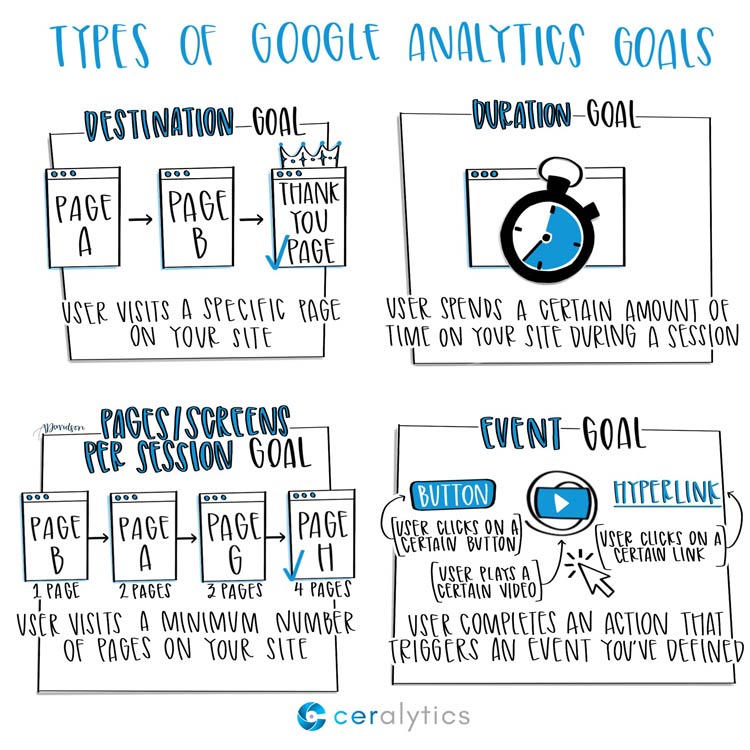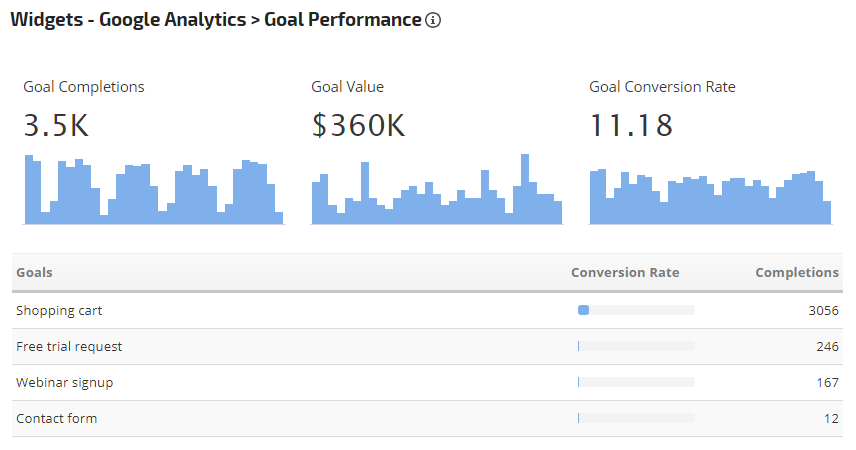Understanding What Data Is Google Analytics Goals Unable to Track
Understanding What Data Is Google Analytics Goals Unable to Track
Blog Article
Discover the Limitations of Google Analytics Goals: Unveiling the Information Kind That Remain Untrackable
As organizations progressively count on data-driven decision-making, comprehending the restrictions of tools like Google Analytics comes to be paramount. While Google Analytics Goals deal useful insights right into customer communications, there exist information kinds that thwart tracking, posturing difficulties to an extensive understanding of user actions.
Insufficient Individual Journey Tracking
Insufficient individual trip monitoring within Google Analytics can impede the capability to properly analyze user behavior. When the individual trip is not fully tracked, there are gaps in the information that avoid a comprehensive understanding of just how customers communicate with a website. This absence of insight can cause missed out on possibilities for optimization and renovations to the customer experience.
One typical concern with incomplete customer trip monitoring is the failure to see the complete path that customers take previously finishing a goal or leaving the site. Without this info, it is challenging to recognize where customers may be running into challenges or friction factors that stop them from converting. Additionally, insufficient monitoring can cover the influence of specific advertising initiatives or internet site changes on user actions.
To address this constraint, it is essential to establish proper tracking systems within Google Analytics to catch the whole user journey. This might include setting up event tracking, objective funnels, or making use of devices like Google Tag Supervisor to make sure that no important communications go unrecorded. By obtaining an extensive sight of the individual journey, web site owners can make even more enlightened choices to enhance user engagement and drive conversions.
Attribution Difficulties
Navigating through acknowledgment obstacles in Google Analytics requires a complete understanding of just how various touchpoints add to the overall conversion process. Attribution challenges arise from the complexity of modern customer journeys, where individuals communicate with several networks before transforming.
One typical attribution difficulty is the trouble in associating conversions to the right resource, especially in situations where users interact with several channels before transforming. This can result in errors in identifying which marketing efforts are driving the most conversions. Furthermore, cross-device monitoring positions an additional acknowledgment challenge, as users commonly change between gadgets during their trip, making it testing to track their communications flawlessly. Online marketers must thoroughly interpret and assess acknowledgment information to make educated decisions and optimize their marketing methods successfully.
Offline Conversions
Provided the difficulties connected with attributing conversions precisely in online networks, the dimension of offline conversions offers a substantial opportunity for online marketers looking for a much more detailed understanding of their clients' journey. Offline conversions refer to activities that consumers absorb the real world, such as making purchases in brick-and-mortar shops or over the phone, going to occasions, or involving with published materials - what data is google analytics goals unable to track. These conversions are vital for organizations that operate both online and offline, as they give valuable insights right into the efficiency of advertising campaigns across numerous touchpoints
Tracking offline conversions generally posed a substantial obstacle for online marketers, as it was challenging to link these actions back to specific on-line communications properly. Nonetheless, with improvements in innovation, such as the integration of CRM systems, unique identifiers, and voucher codes, services can currently link the space between online and offline information to acquire a much more all natural sight of client behavior. By successfully gauging offline conversions, marketing experts can maximize their methods, assign resources more effectively, and ultimately enhance the overall consumer experience.
Cross-Device Monitoring
Cross-device tracking plays an important function in understanding the interconnected nature of consumers' digital communications throughout multiple devices. In today's omnichannel globe, where users flawlessly change between mobile phones, tablets, and desktop computers, tracking their habits throughout these devices is important for marketing professionals to get an extensive sight of their consumer journey.

Additionally, privacy worries and laws such as GDPR and CCPA have even more difficult cross-device monitoring. With individuals demanding more control over their information and increased limitations on monitoring modern technologies, marketing professionals must discover innovative and privacy-compliant means to link individual communications throughout tools.
Dynamic Material Engagement
Recognizing individual interaction with dynamic material is critical in optimizing digital advertising and marketing techniques for enhanced target market communication. Dynamic web content refers to internet site elements that change based on user actions, choices, or other elements, offering a customized experience. Nonetheless, tracking user interactions with vibrant content poses challenges for conventional analytics tools like Google Analytics.
While Google Analytics can track standard communications like clicks and web page sights, it may have a hard time to record even more nuanced involvements within dynamic material. what data is google analytics goals unable to track. Metrics such as time invested on details vibrant elements, float actions, or interactions within pop-ups are usually not quickly quantifiable utilizing common monitoring techniques. This restriction prevents marketing professionals' capability to fully grasp just how individuals are involving with dynamic content and customize their strategies as necessary

Final Thought
In final thought, Google Analytics goals have restrictions in tracking insufficient customer trips, attributing conversions precisely, capturing offline conversions, tracking cross-device interactions, and determining vibrant content interaction. These constraints highlight the importance of exploring additional tracking techniques and tools to obtain an extra thorough understanding of individual actions and conversions beyond what Google Analytics can offer.
While Google Analytics Goals offer useful insights right into customer communications, there exist information kinds that avoid monitoring, presenting difficulties to a detailed understanding of user behavior.Incomplete individual trip tracking within Google Analytics can hinder the capability to properly examine customer actions. When the individual trip is not totally tracked, there are gaps in the information that protect against an extensive understanding of exactly how users engage with a website.One common concern with incomplete user journey monitoring is the failure to see the full course that individuals take previously finishing an objective or leaving the website. By getting an extensive sight of the customer trip, internet site owners can make more educated choices to enhance customer involvement and drive conversions.
Report this page